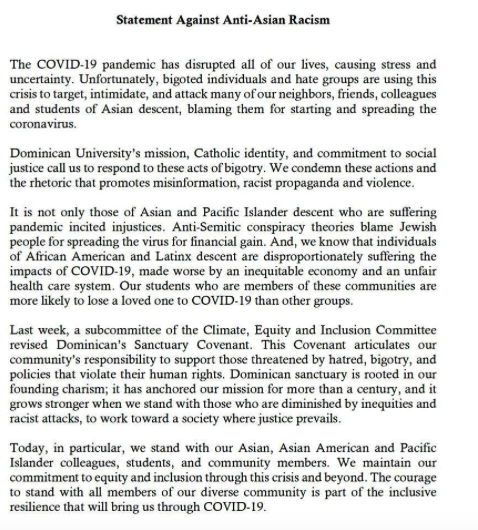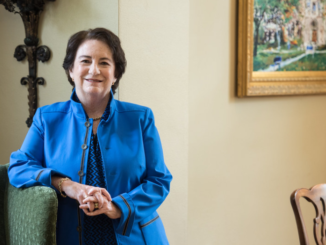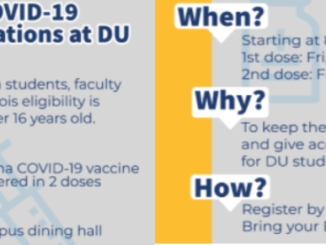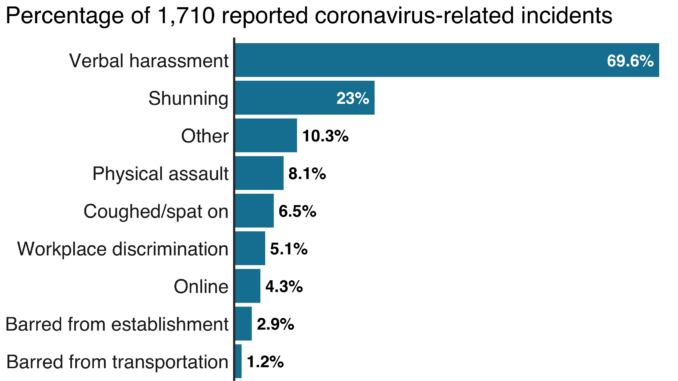
Alongside the quarantine and COVID-19 updates trails the shadow of antagonism against Asian Americans in the United States. As a response to an email from Asian American faculty and students, Dominican University issued an institutional statement condemning anti-Asian racism.
“Today, in particular, we stand with our Asian, Asian American and Pacific Islander colleagues, students, and community members” the statement, released on April 29, declares. “We maintain our commitment to equity and inclusion through this crisis and beyond”.
The statement further specifies that Dominican University’s Catholic identity deplores “acts of bigotry” and “rhetoric that promotes misinformation, racist propaganda and violence”.
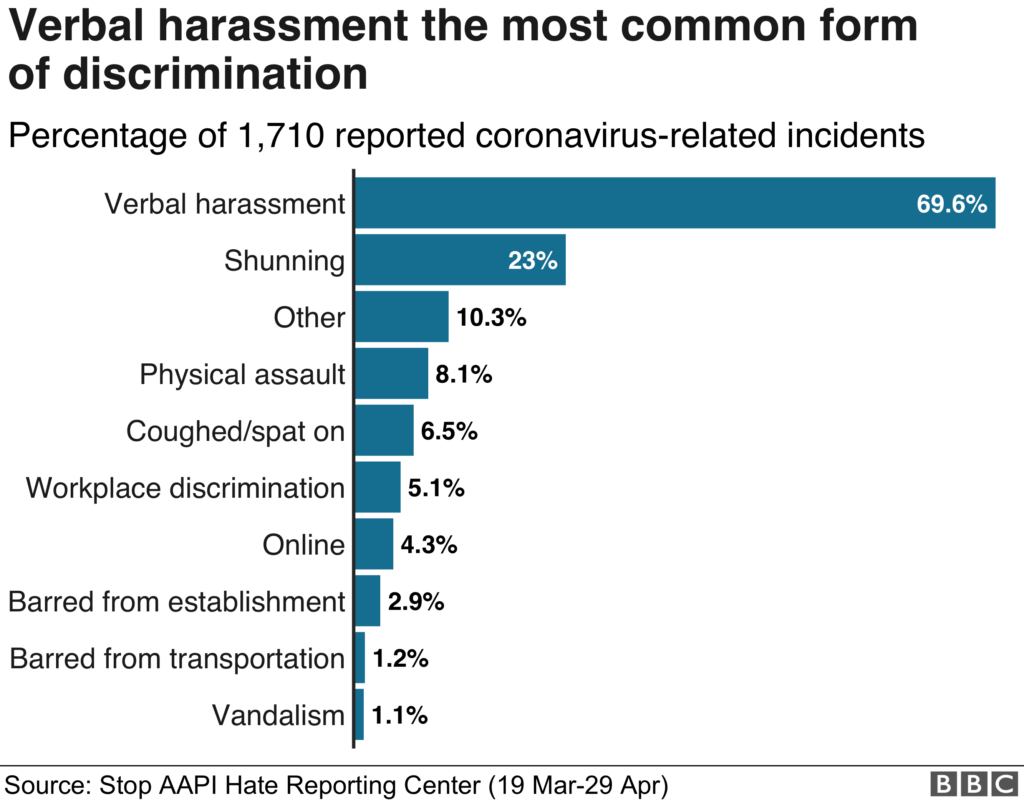
Discriminatory acts against people of Asian descent has risen rapidly since the start of COVID-19 in China.
Asian Pacific Policy & Planning Council reported a total of 2066 incidents of racism against Asian Americans as of June 3. The hate incidents include anti-immigrant nationalism, animosity, scapegoating, parroting “Chinese virus”, and racist depiction of Chinese.
Jane Hseu, an English professor, said she drafted a group email after some discussions about anti-Asian incidents with Joyce Shim, a School of Social Work professor.
The email was sent out on April 21 to eleven students and faculty who have previously supported anti-racism and Asian American issues. The statement is released by Donna Carroll a week after the email.
Hseu praises the statement as a good start for community awareness. She looks forward to more educational opportunities about Asian American issues in the future.
“I taught the first Asian American studies class only a couple of years ago” Hseu said. “So, all that work could be increased on campus; that also relates to Asian American communities off campus and things that’s going on. I mean, it’s a start and I think it’s important and I’m glad the statement is out, but other things can be done as well”.
Hseu said she did not experience any explicit anti-Asian incidents on campus, but she felt self-conscious when news reporting of COVID-19 started in March. Under the influence of a flu, she was apprehensive of being singled out as a Chinese American.
“Even at Dominican, I started to get a sore-throat and I was like I don’t want to get sick this semester” Hseu said. “I was so busy. But I felt as a Chinese person too, I didn’t want to have a cold, and I am Chinese, and people are going to be looking at me. So, I just felt that there was that other layer”.
Shim had heard personal accounts from Asian families and friends of discriminatory incidents. One of her friends was called a virus on the subway. Another was given the middle finger while out walking with her baby stroller. Still another Asian friend was singled out and asked to leave the gym for no particular reason by a staff while working out. Hseu also read in an online group of a woman being called “kung flu” while walking in Oak Park.
Kanoa Ikeda-Flynn, a 2020 graduate, said in an email reply that negative content on social media also reinforces the blames stemming from COVID-19.
“Where I did see a lot of negative jokes, comments, etc. mainly came from social media” Ikeda-Flynn said. “On one hand I wanted to stay informed but on another, it was hard to read and realize many people didn’t care and blamed Chinese and in extension, Asians in general for the pandemic”.
In learning about these racially charged incidents, Hseu points out the importance of education on the history of racism against Asians in America. A learning that she believes will identify the current racism with roots of past prejudices.
Hseu said that the need for awareness and education about Asian American experiences have been echoed by students and staff alike.
“It’s not so explicit that someone is calling you a racial slur on campus” Hseu said. “I think some of these things are subtle, but I do think that Asian American is a small group [and needs to be] having some more visibility, having some support, having some acknowledgement of our particular experiences and some of the issues facing the community. I have heard that not just from students but also Asian American faculty and staff too”.
Shim realizes that the current rise of derogative comments and behaviors against Asians reflects a repeating pattern of discrimination of minority in the United States history.
“Throughout our history of the USA, whenever something extraordinary and tragic happened, the society always found a scapegoat, especially among communities of color and it causes long-lasting traumas” Shim said. “That feeling I have: do I feel safe going out today? It is the feeling that our Black and Brown brothers and sisters face on a daily basis since the beginning of this country. Only taking action in solidarity, will change come”.
Sheila Radford-Hill, Chief Diversity Officer, said the Office of Diversity, Equity, and Inclusion will partner with the new Multicultural center to establish programs for intercultural understanding and development.
Radford-Hill said methods to eliminate bias will include context and historical awareness.
“Strategies to prevent anti-Asian bias as the same as the strategies we need on campus to mitigate all forms of bias” Radford-Hill said. “We must provide more context, more history, and greater cultural awareness about race and ethnicity on our campus”.
The awareness of history and Asian stereotypes is echoed by Ada Cheng, an adjunct faculty. As a storyteller and speaker, she believes storytelling is a powerful way to “understand one another’s histories, develop empathy and compassion, and hopefully feel compelled to take actions and to engage in social changes”.
Cheng has submitted a proposal on Asian American’s experience during the pandemic for theCaritas Veritas Symposium in fall. She is interested in encouraging a shared understanding and examining impacts of social structures on individual and shared experiences.
“We cannot understand individual and group experiences in isolation” Cheng said. “They have to be understood side-by-side as well as in comparison, so we know how systems of racism and white supremacy operate”.
